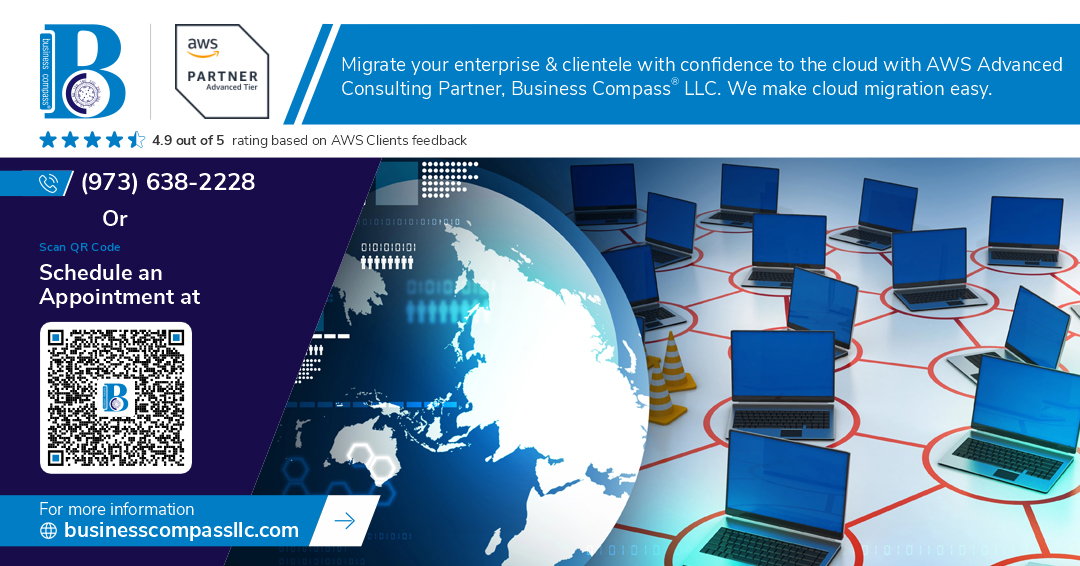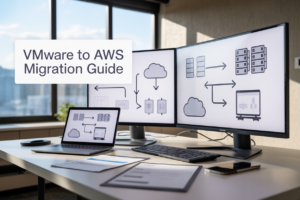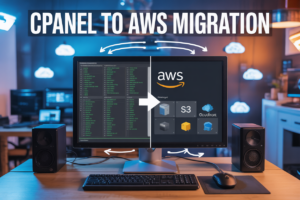AWS VPC security doesn’t have to be complicated, but getting it wrong can expose your entire infrastructure to threats. If you’re a DevOps engineer, cloud architect, or system administrator managing AWS environments, you need a solid strategy for secure SSH access AWS that doesn’t compromise your network’s integrity.
A bastion host acts as your secure gateway to private resources within your VPC. Think of it as a heavily fortified checkpoint that controls who gets access to your internal systems and how they get there. This AWS jump server approach has become the gold standard for organizations serious about AWS network security.
We’ll walk through the essential VPC networking basics you need to understand before diving into implementation. You’ll learn how to handle bastion host setup from scratch, including proper AWS bastion host configuration that follows security best practices. We’ll also cover the monitoring and maintenance practices that keep your bastion host infrastructure running smoothly and securely over time.
By the end, you’ll have a clear roadmap for implementing VPC subnet security that protects your AWS infrastructure while giving your team the access they need to do their jobs effectively.
Understanding VPC Architecture and Security Challenges
Core components of Virtual Private Cloud infrastructure
AWS VPC security forms the foundation of cloud networking, where virtual networks operate within isolated environments. Your VPC contains essential components: subnets that segment traffic, route tables directing network flow, internet gateways enabling external access, and NAT gateways for outbound connections. Security groups act as virtual firewalls controlling instance-level access, while Network ACLs provide subnet-level protection. Understanding these VPC networking basics helps you architect secure, scalable infrastructure that protects sensitive workloads from unauthorized access.
Common security vulnerabilities in cloud networking
Cloud networks face unique threats that traditional on-premises security models don’t address. Direct SSH access to private instances creates attack vectors, especially when instances lack proper hardening. Overly permissive security group rules often grant unnecessary access, while misconfigured route tables can expose internal resources. Poor subnet design mixing public and private workloads increases risk exposure. Many organizations struggle with managing SSH keys across distributed teams, leading to shared credentials and weak access controls that compromise AWS infrastructure protection.
Network isolation principles and best practices
Effective VPC subnet security relies on strategic network segmentation and layered defense mechanisms. Design private subnets for sensitive workloads, keeping them isolated from direct internet access. Implement least-privilege access through carefully crafted security groups that only allow required ports and protocols. Use separate subnets for different application tiers – web, application, and database layers should never share network segments. Deploy bastion host best practices by placing jump servers in public subnets while maintaining strict access controls and comprehensive logging for all connection attempts.
What is a Bastion Host and Why You Need One
Definition and primary functions of bastion hosts
A bastion host acts as a secure gateway between your public internet and private AWS VPC resources. This hardened server sits in a public subnet and serves as the single entry point for administrators who need SSH or RDP access to instances in private subnets. The bastion host configuration includes minimal software installations, restricted network access, and comprehensive logging to maintain security. By centralizing access through this AWS jump server, you create a controlled environment where all administrative traffic passes through one monitored checkpoint, making it easier to track who accesses your infrastructure and when.
Key security benefits for VPC protection
Bastion hosts provide multiple layers of AWS VPC security by reducing your attack surface and creating a single point of access control. Instead of exposing multiple instances to the internet, only the bastion host requires a public IP address. This setup enables you to keep your application servers, databases, and other critical resources in private subnets with no direct internet access. The bastion host acts as a security checkpoint, allowing you to implement strict access controls, multi-factor authentication, and detailed session logging. This approach significantly reduces the risk of unauthorized access while maintaining the flexibility administrators need to manage VPC subnet security effectively.
Cost-effective alternative to complex VPN solutions
Running a bastion host offers substantial cost savings compared to enterprise VPN solutions or AWS VPN Gateway services. A single EC2 instance can handle multiple concurrent administrative sessions at a fraction of the cost of dedicated VPN hardware or managed VPN services. The bastion host setup requires minimal ongoing maintenance and can be automated using AWS CloudFormation or Terraform. For small to medium-sized deployments, this approach provides enterprise-level security without the complexity and expense of traditional VPN infrastructure, making it an ideal choice for organizations looking to implement secure SSH access AWS without breaking their budget.
Compliance requirements and audit trail advantages
Bastion hosts excel at meeting compliance requirements by providing comprehensive audit trails and centralized access logging. Every administrative session passes through the bastion host, creating detailed logs of who accessed which resources and when. This centralized approach simplifies compliance reporting for standards like SOC 2, PCI DSS, and HIPAA by consolidating access logs in one location. The bastion host best practices include enabling CloudTrail integration, implementing session recording, and maintaining detailed access logs that auditors can easily review. This level of visibility and control helps organizations demonstrate proper access management and security controls to regulatory bodies and internal security teams.
Setting Up Your Bastion Host Infrastructure
Choosing the right EC2 instance type and specifications
Select a t3.micro or t3.small instance for basic bastion host needs, as these provide adequate CPU and memory for SSH connections without unnecessary costs. For high-traffic environments handling multiple concurrent sessions, consider m5.large instances with enhanced networking capabilities. The bastion host doesn’t require significant storage since it primarily serves as a jump server, so stick with the default 8GB EBS volume unless you need extensive logging capabilities.
Configuring security groups for maximum protection
Create a dedicated security group for your bastion host that restricts inbound SSH access to specific IP addresses or CIDR blocks representing your organization’s network. Configure outbound rules to allow SSH connections only to private subnet resources on port 22. Never allow unrestricted 0.0.0.0/0 access for SSH traffic. Add additional rules for administrative protocols like HTTPS if you plan to use web-based management tools, but always apply the principle of least privilege when defining these AWS VPC security rules.
Network ACL configuration for additional security layers
Implement network ACLs as an additional security layer beyond security groups to create defense in depth for your AWS bastion host configuration. Configure inbound ACL rules to allow SSH traffic from trusted networks and outbound rules permitting connections to your private subnets. Unlike security groups, NACLs are stateless, so you must explicitly allow return traffic on ephemeral ports (typically 1024-65535). This dual-layer approach strengthens your VPC networking basics and provides redundant protection against unauthorized access attempts.
SSH key management and authentication setup
Generate dedicated SSH key pairs specifically for bastion host access and distribute public keys securely to authorized users. Store private keys using AWS Systems Manager Parameter Store or AWS Secrets Manager for centralized management and audit trails. Configure SSH daemon settings to disable password authentication, enforce key-based authentication only, and implement connection timeouts to prevent idle sessions. Consider using SSH certificates or AWS Session Manager for enhanced security and simplified key rotation processes in your secure SSH access AWS infrastructure.
Proper subnet placement within your VPC
Deploy your bastion host in a public subnet within your VPC to enable direct internet access while maintaining security boundaries. Create dedicated public subnets specifically for bastion hosts rather than mixing them with other internet-facing resources. Place these subnets across multiple Availability Zones for high availability and disaster recovery. Ensure your private subnets containing sensitive workloads remain isolated from direct internet access, with the bastion host serving as the controlled entry point. This subnet architecture forms the foundation of effective AWS infrastructure protection and follows bastion host best practices for network segmentation.
Implementing Secure Access Patterns
SSH tunneling techniques for database connections
SSH tunneling creates an encrypted pathway through your bastion host to reach private database instances securely. The most common approach uses local port forwarding, where you map a local port on your machine to the database port through the bastion host. For example, running ssh -L 5432:db-instance.region.rds.amazonaws.com:5432 ec2-user@bastion-host creates a tunnel that lets you connect to your RDS instance as if it were running locally on port 5432. This technique works perfectly for PostgreSQL, MySQL, and other database engines within your VPC subnet security configuration. Dynamic port forwarding with SOCKS proxies offers another powerful option, creating a secure tunnel for multiple database connections simultaneously through a single SSH session.
Port forwarding configuration for web applications
Port forwarding through your AWS bastion host configuration enables secure access to internal web applications without exposing them directly to the internet. Local port forwarding maps specific ports on your local machine to application ports on private instances, while remote port forwarding allows internal services to connect back through the tunnel. Configure your bastion host best practices by setting up dedicated forwarding rules for each application tier – web servers on port 80/443, application servers on custom ports, and API endpoints on their respective ports. Use SSH config files to streamline these connections, defining host aliases that automatically establish the necessary tunnels. This approach maintains your AWS VPC security posture while providing developers and administrators seamless access to internal applications.
Multi-hop authentication strategies
Multi-hop authentication adds layers of security by requiring users to authenticate through multiple checkpoints before reaching critical resources. Start with SSH key-based authentication to your AWS jump server, then require additional authentication for subsequent hops to sensitive systems. Implement SSH agent forwarding carefully, enabling it only when necessary and disabling it after use to prevent key exposure. Certificate-based authentication provides stronger security than traditional key pairs, especially when combined with short-lived certificates that expire automatically. Consider implementing ProxyJump configurations in SSH to create seamless multi-hop connections while maintaining audit trails. Time-based access controls and session recording enhance your secure SSH access AWS implementation by automatically terminating idle sessions and logging all activities for compliance requirements.
Monitoring and Maintaining Your Bastion Host
CloudTrail logging for access audit trails
CloudTrail automatically captures every API call made to your bastion host, creating a detailed audit trail of who accessed your infrastructure and when. Configure CloudTrail to log SSH connections, security group modifications, and EC2 instance changes to maintain complete visibility into your AWS bastion host configuration. Set up CloudWatch alarms to trigger notifications when unusual access patterns occur, such as failed login attempts or connections from unexpected IP addresses. Store these logs in a separate S3 bucket with restricted access to prevent tampering and ensure compliance with security auditing requirements.
Automated security updates and patch management
Your bastion host needs regular security updates to protect against vulnerabilities that could compromise your entire VPC networking security. Use AWS Systems Manager Patch Manager to automatically install critical security patches during scheduled maintenance windows. Configure the bastion host to download updates from secure repositories and restart services as needed without disrupting active SSH sessions. Create AMI snapshots before applying major updates, allowing quick rollbacks if issues arise. Monitor patch compliance through Systems Manager dashboards to ensure your bastion host best practices remain current against emerging threats.
Performance monitoring and scaling considerations
Monitor CPU usage, memory consumption, and network throughput on your bastion host to identify performance bottlenecks that could affect secure SSH access AWS connectivity. CloudWatch metrics help track concurrent connection counts and session duration patterns to determine when scaling becomes necessary. Consider implementing an Auto Scaling group with multiple bastion hosts across different availability zones for high-traffic environments. Load balancers can distribute SSH connections across multiple instances, improving both performance and reliability of your AWS infrastructure protection setup while maintaining security standards.
Backup and disaster recovery planning
Regular AMI snapshots provide quick recovery options if your bastion host fails or becomes compromised, protecting your AWS VPC security architecture. Schedule automated backups of configuration files, SSH keys, and security group settings to S3 with cross-region replication for disaster recovery. Document your bastion host setup procedures and maintain updated runbooks for rapid deployment in emergency situations. Test recovery procedures monthly by launching new instances from backup AMIs and verifying all security configurations work correctly. Keep encrypted copies of critical access keys in AWS Secrets Manager for secure recovery access.
Your AWS VPC is only as secure as its weakest entry point, and a properly configured bastion host serves as your first line of defense against unauthorized access. By creating a dedicated gateway that controls and monitors all access to your private resources, you’re building a security architecture that follows the principle of least privilege while maintaining operational flexibility. The key lies in treating your bastion host not just as a server, but as a critical security control that requires ongoing attention and maintenance.
Start implementing bastion host security in your VPC today, even if you’re working with a simple setup. Begin with the basic configuration, establish your security groups and access patterns, then gradually add monitoring and automated maintenance procedures. Your future self will thank you when you need to investigate a security incident or demonstrate compliance to auditors, and you’ll sleep better knowing your critical infrastructure sits behind a properly hardened gateway.



















